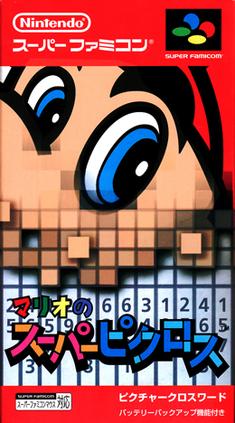This article needs additional citations for verification .(March 2018) |
| Mario's Super Picross | |
|---|---|
 | |
| Developers | |
| Publisher | Nintendo |
| Director | Tsunekazu Ishihara |
| Producer | Takeshi Kawaguchi |
| Designer | Agura Tanaka |
| Composer | Toshiyuki Ueno |
| Series | Mario's Picross |
| Platform | Super Famicom |
| Release | September 14, 1995 |
| Genre | Puzzle |
| Mode | Single player |
Mario's Super Picross [a] is a Super Famicom sequel to Mario's Picross , and a part of Nintendo's Picross video game franchise. The game is compatible with the Super Famicom Mouse. It is developed by Jupiter and Ape and published by Nintendo.
Contents
After the failure of Mario's Picross in North America, Nintendo decided not to release this game in that region. The game was made available for download on the Wii's Virtual Console service on December 19, 2006, in Japan and later in PAL regions on September 14, 2007, the 12th anniversary of the game's original Japanese release - marking the first Western release of the game, which has been left nontranslated with original Japanese text intact. [1] This game was re-released for download on the Wii U's Virtual Console service in both Japan and the PAL regions on April 27, 2013. It was made available worldwide on the Nintendo Classics service in September 23, 2020. [2]
